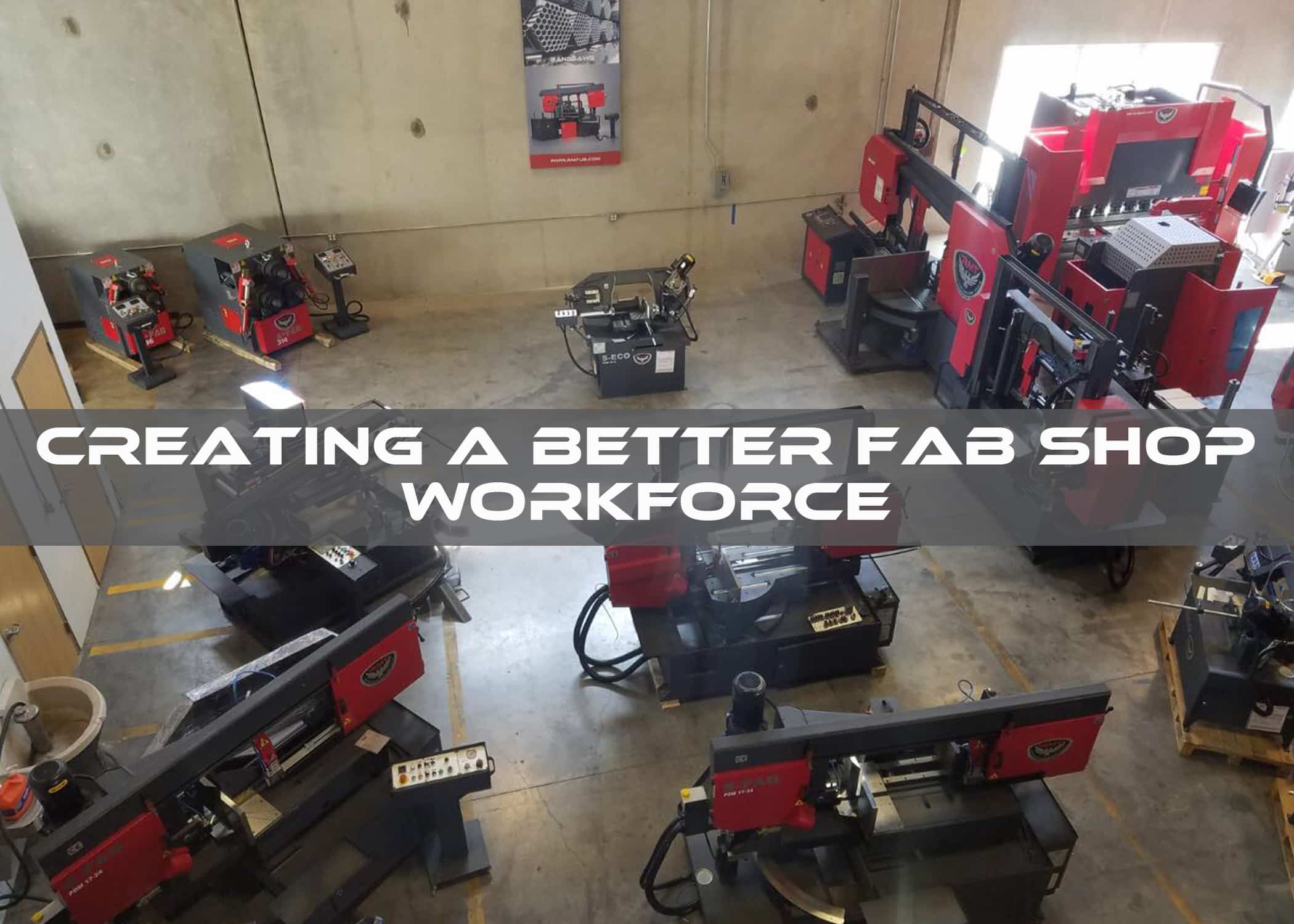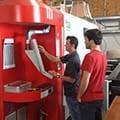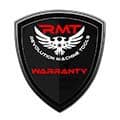The Most Important Investment
It had been a few months since the metal fabrication shop had moved into its new facility, and the owner was excited to showcase his operation to an old friend who had previously worked in the industry. He proudly showed off his fleet of precision metalworking machines, most less than five years old.
“Very impressive,” commented the friend at the end of the tour. “It looks like you invested your profits well in building up the company.” Turning to the shop owner, the friend added, “Except in one critical area.”
In response to the surprised reaction from the fabricator, the friend continued. “As I’ve looked around, I’ve seen disgruntled-looking workers, clutter laying around your new shop, and signs of frustration as employees have run back and forth from one end of the shop to the other because you don’t have a well-defined workflow. In addition, one of your workers made a rude gesture behind your shop manager’s back, two members of your team were arguing out in the parking lot, and when you had me look in your break room, I’m pretty sure I saw one of your people reading help-wanted ads.”
The owner protested the assessment, admitting that while there were problems, he was going out of his way to accommodate employees with company parties, extra time off for medical issues, and weekly prizes based on work and attendance. He also pointed out that he was holding mandatory safety meetings every week with lunch provided, sending his key equipment operators out for additional training, and cross-training people on different machines so that they could fill in when needed.
“Those are all extremely good programs,” the friend admitted, “but I’m not sure that you have a very unified culture here in your company.”
As the owner started to defend the diversity of his shop, the friend interrupted, “No, that’s not what I mean by ‘culture.’ The culture of your business is your identity. It sets the expectations for how your employees work together and otherwise behave. A good culture helps a company retain its personnel, and it also helps new hires know what’s expected of them when they become part of the company and not just what’s needed for their job. It’s all about establishing core values and inspiring your people to adopt them into their lives. It’s how you go from having a workforce to having a team.”
Crafting a Competent Corporate Culture
“Corporate Culture” is a term that’s thrown around boardrooms in large companies, but it’s just as relevant to a three-man fab shop. It refers to establishing a set of values and practices that all management and staff of a business are expected to adhere to and incorporate into their work lives, directing their interactions with each other as well as with customers, vendors, and other companies. One might think of corporate culture as the personality of a business.
The success of your fab shop can depend to a great extent on the type of corporate culture you have adopted and how well your employees stick with it. There isn’t necessarily a right or wrong culture, you simply need to find the one that works best for your specific company.
Each type of culture has its own goals and becomes the foundation for the mission plan of the company that implements it. Business analysts have defined an array of different types of corporate culture, including:
- Authority culture
- Caring culture
- Customer-focused culture
- Enjoyment culture
- Experimental culture
- Learning culture
- Mercenary culture
- Purpose-driven culture
- Safety culture
- Seniority-based culture
- Task-oriented culture
Despite a potentially limitless list of nuanced possibilities, four specific contrasting corporate cultures predominate most discussions in business: Market, Hierarchy, Clan, and Adhocracy. While a company’s culture can have elements of each, almost every business will fall into one of these four categories.
To see how these four relate to each other—and where your company fits among them—try this simple activity:
- Take a blank sheet of paper and draw a large square box in the middle to create a simple X and Y axis graph.
- Draw a horizontal line and a vertical line through the middle of the box, dividing it into four identical smaller boxes, or quadrants.
- At the top edge of the big box write “Flexibility.” At the bottom edge of the box write “Stability.” These are two competing values for the first axis of your graph.
- At the left edge of the box write “Internal.” At the right edge of the box write “External.” These are two other competing values to form the second axis of your graph.
- Label the top left quadrant “Clan.”
- Label the top right quadrant “Adhocracy.”
- Label the bottom left quadrant “Hierarchy.”
- Label the bottom right quadrant “Market.”
This simple tool, known as a Competing Values Framework, can help you both identify your current corporate culture and see where it might be improved. While there are professionally designed assessments available that can be used to plot out dozens of different aspects of your business on this graph to provide a comprehensive picture of what culture best describes your shop, you don’t have to go to those lengths. You can get a quick sense of where your organization falls just by answering two questions:
- Do you mostly give your employees the freedom to act and allow them discretion on how they go about projects (flexibility), or do you keep strict control over things (stability)?
- Is your company’s emphasis primarily on collaboration and personnel development (an internal focus), or is it oriented more on what happens outside of it, like the market, your competitors, your customers’ needs, or the latest technological offerings (an external focus)?
How you answer both of those questions will help you determine which quadrant your company falls largely within, giving you a good idea of your current corporate culture. If, as a manager, you allow your employees a generous amount of latitude and are concerned with building your team above other priorities, then you most likely have a Clan culture. On the other hand, if you exercise strong control over all aspects of your team’s work while carefully watching trends in the industry to help you plan your next moves, you may have a Market culture.
Again, there is no right culture, just the one best for your organization. A law firm will likely have a different culture than a graphic design company. Even within the metal fabrication industry, different shops will adopt different cultures that best suit their size, their makeup, their customers, and their specific markets. The key is unifying the entire staff within the culture that works best for the shop, creating a strong workforce made up of team players.
To further help you identify both where your fabrication shop currently is and where you’d like it to be within the four dominant corporate cultures, here are some definitions of them:
- The creative culture of Adhocracy. This is a dynamic culture where managers and staff are risk takers who think “outside the box” and aren’t afraid to try new things, creating new products and services along the way. While it often makes mistakes, it learns from them to improve. It is a culture that appeals to people with bright ideas, but also runs the risk of creating excessive competition between employees.
- The collaborative culture of Clan. It is a friendly, people-oriented culture, where the company is viewed almost as a family. The needs of the staff are a priority, and managers tend to behave more like mentors than bosses. Loyalty to each other—and, by extension to customers—defines the work ethic. While generally creating a satisfied workforce, clan culture works better in smaller firms than larger ones where decisive leadership and respect for authority is needed.
- The controlling culture of Hierarchy. This is a structured culture that is process-oriented and very concerned with procedure. It’s the traditional corporate organization, with leaders at the top and everyone in their place. It tends to avoid risk and gives clear direction but can neglect the needs of individual employees and not be able to adapt well to change.
- The competing culture of Market. With its results-oriented mindset, a market-driven culture is concerned with getting the job done. It is focused on goals with an emphasis on winning, but it can also lead to employee burnout, adversely affecting overall morale and productivity.
Once you’ve identified what culture best describes your organization, the next step is to determine if a different one would work better for your ultimate objectives. Whichever one you choose to pattern yourself after, be extremely cautious of falling into the pitfalls associated with it. While you can’t please everyone, it’s important to maintain a balance between providing for your company’s needs and those of your employees.
As you work to improve your fab shop’s culture, make sure you keep your core values firmly in sight. If you have yet to define them, do so in a way that considers how you would want to be treated if you were an employee, customer, or vender of your company. Make sure to involve your managers in implementing any shift in corporate culture and invite feedback from your employees so that they become part of the process.
Regardless of the corporate culture you ultimately adopt, the most critical element is having “buy-in” on the part of your workers. If your employees don’t fully accept your fab shop’s core values, and if they aren’t actively supporting and participating in your corporate culture, your business will face serious challenges.
Motivating your managers and employees so that they get onboard with the vision, direction, and policies of your metal fabrication shop is the key to evolving your staff from a workforce into a dedicated and productive team.







